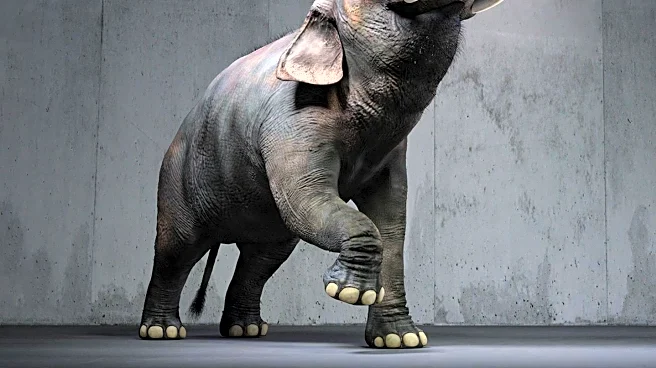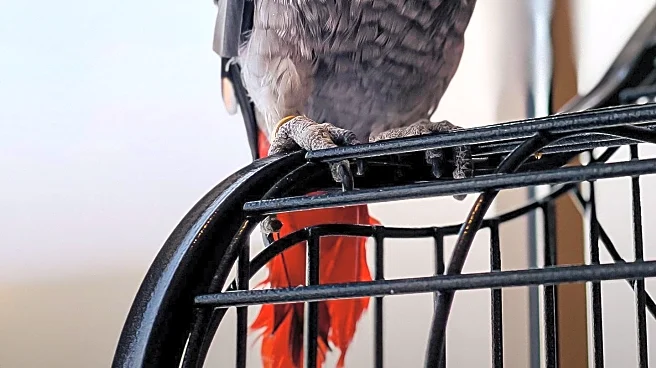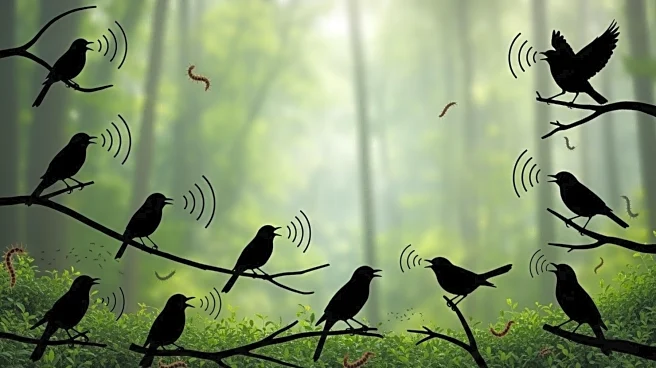What is the story about?
What's Happening?
Recent studies have highlighted the complexity of animal communication, revealing that animals like dogs and elephants use sophisticated methods to interact. Dogs have been shown to categorize toys and use pre-programmed buttons to communicate with humans, while elephants use specific vocalizations to address members of their group. Dolphins create unique signature whistles that serve as names, and songbirds exhibit regional dialects. These findings suggest that animal communication is far more intricate than previously understood, challenging human-centric views of language.
Why It's Important?
Understanding animal communication on their terms rather than through a human-centric lens can lead to more accurate interpretations of animal behavior and intelligence. This knowledge can enhance conservation efforts by providing insights into social structures and interactions within animal communities. It also encourages a reevaluation of how humans perceive and interact with animals, potentially leading to more empathetic and informed approaches to wildlife management and protection.
Beyond the Headlines
The study emphasizes the need for humility and open-mindedness in scientific research, recognizing that human language is just one of many communication systems evolved by different species. It highlights the diversity of communication methods across the animal kingdom, including sound, color, smell, and vibrations, which humans may not fully perceive. This perspective can foster a deeper appreciation for the complexity and richness of animal life, promoting ethical considerations in how humans engage with and impact wildlife.
AI Generated Content
Do you find this article useful?














